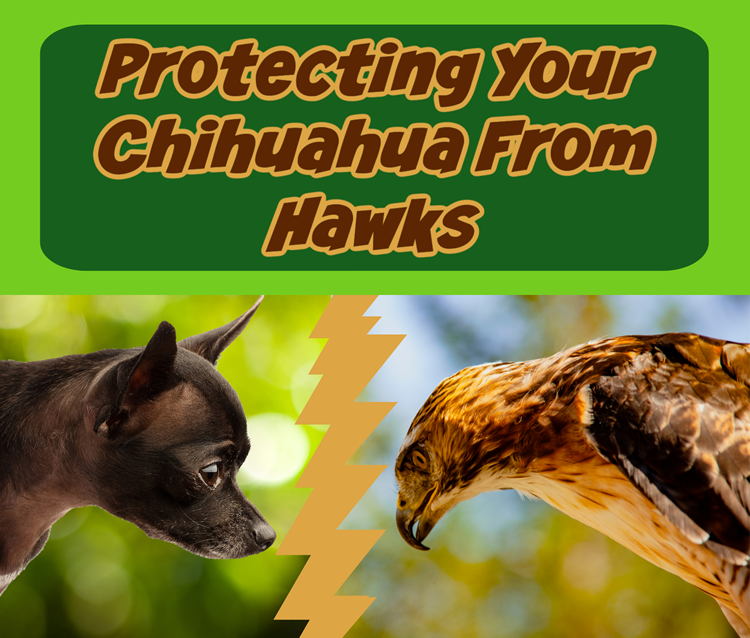
It’s every Chihuahua owner’s worst nightmare: You open the back door so that your four-legged companion can go potty, only for a hawk to swoop down and attack him. With their dagger-sharp talons, hawks can deal some serious damage, potentially maiming or killing your Chihuahua. You can still let your Chihuahua outside, but you should consider taking some precautions to protect him from these majestic yet fierce birds.
Do Hawks Really Attack Chihuahuas?
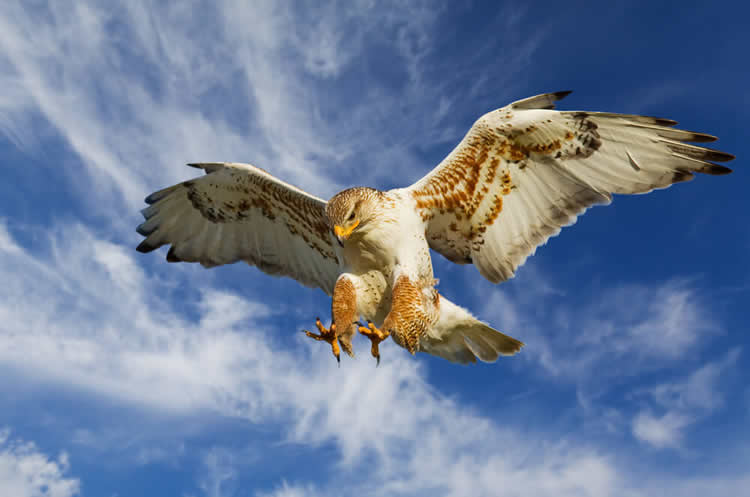
It’s not just an urban legend; hawks have been known to attack Chihuahuas.
Hawks are birds of prey, meaning they hunt other animals for food. Most hawks hunt twice a day: once in the morning and again in the afternoon. They will either sit atop a perch or soar over an open landscape while looking for their next meal. Upon spotting a target, they will swoop down to attack it.
Hawks don’t discriminate between domesticated and wild animals. Assuming an animal is small enough to consume and doesn’t pose a threat, hawks may attack it.
Hawks commonly prey upon the following animals:
- Rabbits
- Squirrels
- Chipmunks
- Mice
- Voles
- Fish
- Crayfish
- Lizards
- Frogs
- Grasshoppers
- Other birds
Chihuahuas are small, so hawks may view them as targets as well. Hawk attacks involving Chihuahuas are uncommon, but they can and do occur.
Can Hawks Carry Chihuahuas?
Hawks can injure or kill Chihuahuas, but that doesn’t necessarily mean they can carry Chihuahuas. The amount of weight a hawk can carry is proportional to the hawk’s own body weight.
There are over 200 known species of hawks worldwide, about two dozen of which live in North America. Some of these species are larger than others, and the larger the hawk, the more weight it can carry.
The largest hawk species in North America is the ferruginous hawk. Ferruginous hawks stand 20 to 26 inches tall and weigh 3 to 4 pounds on average. The most common hawk species in North America, on the other hand, is the red-tailed hawk. Red-tailed hawks are found year-rear throughout most of the continental United States and Central America. They stand 18 to 24 inches tall and weigh 1.5 to 3.5 pounds on average.
Hawks can’t carry more than their own body weight. According to the University of Missouri’s Raptor Rehabilitation Project, in fact, most hawks can only carry up to half of their body weight. They can still use their curved talons to attack heavier animals, but hawks will struggle to lift them off the ground.
Chihuahuas weigh 3 to 6 pounds on average. While small, Chihuahuas are still heavier than most hawks, including the all-too-common red-tailed hawk. Therefore, hawks typically can’t carry Chihuahuas.
In some instances, a large hawk may be able to lift a small Chihuahua off the ground. Even then, however, it won’t be able to carry the Chihuahua very far. The hawk will release the Chihuahua shortly after picking him up, at which point the hawk will fly off in search of a lighter and more suitable target upon which to prey.
Beyond Hawks: Other Birds of Prey That Can Attack Chihuahuas
Hawks are just one of several birds of prey that pose a threat to Chihuahuas. There are other types of birds of prey that can attack Chihuahuas, including falcons, eagles and owls.
#1) Falcons
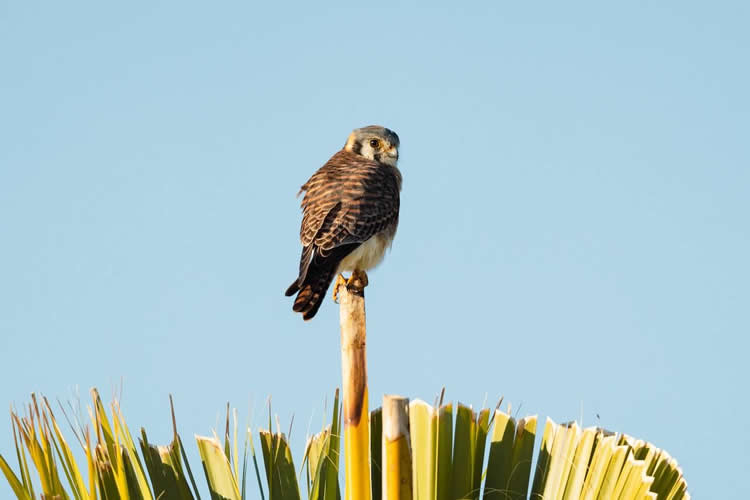
Falcons are birds of prey that inhabit all continents except for Antarctica. North America is home to eight species of falcons, the most common of which is the American Kestrel.
When compared to hawks, falcons are smaller. The American Kestrel, for instance, only weighs about 3 to 6 ounces on average. What they lack in size, though, they make up for in speed. Falcons are fast and agile. American Kestrels can fly at speeds up to 40 mph, and they can dive at speeds up to 60 mph.
Falcons also primarily use their beaks to attack prey, whereas hawks use their talons. After identifying a target, falcons will swoop down to attack it. They will grab the prey with their talons, but falcons will use their beaks to bite and kill the prey.
#2) Eagles

Eagles are birds of prey of the Accipitridae family. Colloquially known as “the king of birds,” they are at the top of the food chain.
Eagles are significantly larger and heavier than hawks. There are only two species of eagle in North America: the bald eagle and the golden eagle. The former is the national bird of the United States, whereas the latter is the national bird of Mexico. While their other nuances between them, bald eagles and gold eagles are roughly the same size. They stand about 3 feet fall and weigh 6 to 14 pounds on average.
According to HawkQuest, bald eagles have a gripping force of 400 pounds per square inch (PSI), which is about 10 times that of the average person’s gripping force. Red-tailed hawks, in comparison, have a gripping force of roughly 200 PSI.
#3) Owls

Owls are birds of prey from the order Strigiformes. There are 20 owl species in North America, some of the most common being the barn owl, great horned owl, burrowing owl, spotted owl and western screech owl.
While hawks, falcons and eagles are all diurnal, owls are nocturnal, meaning they hunt at night. Many owl species also have the ability to turn their head 135 degrees in both directions, resulting in a 270-degree field of view.
Owls aren’t particularly agile, but they are incredibly strong. Some owl species, such as the great horned owl, can carry up to three times their body weight. Considering that great-horned owls weigh 3 to 4 pounds on average, they can carry some rather heavy animals. Fortunately, owls generally don’t target Chihuahuas or other small pets.
How to Protect Your Chihuahua From Hawks and Other Birds of Prey
Large dogs are typically safe from hawks, but small dogs may be viewed as prey. These predatory birds may swoop down and attack an unsuspecting Chihuahua. They may not be able to carry Chihuahuas, but they can still cause serious injury or death. Here’s how to protect your Chihuahua from hawks and other birds of prey.
#1) Always Supervise
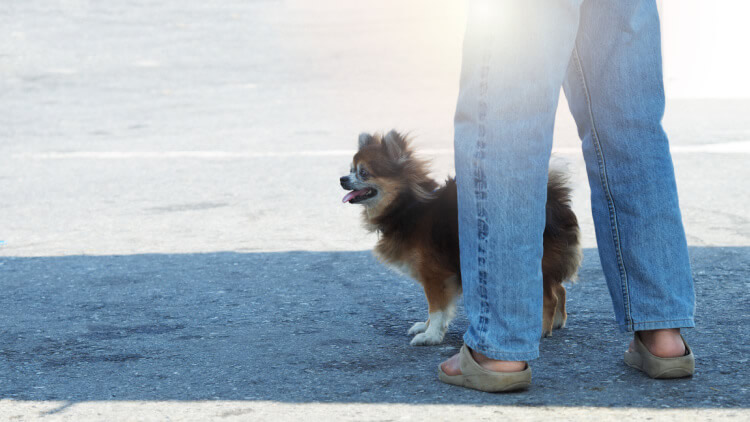
You can protect your Chihuahua from hawks and other birds of prey by supervising him. Don’t just open the door when your Chihuahua needs to go potty. Instead, walk outside with your Chihuahua while he does his business.
Unless they are defending their nest, hawks generally try to keep their distance from humans. They view humans as hazards and not prey. As a result, your presence will ward off these predatory birds.
#2) Keep on a Leash and Harness
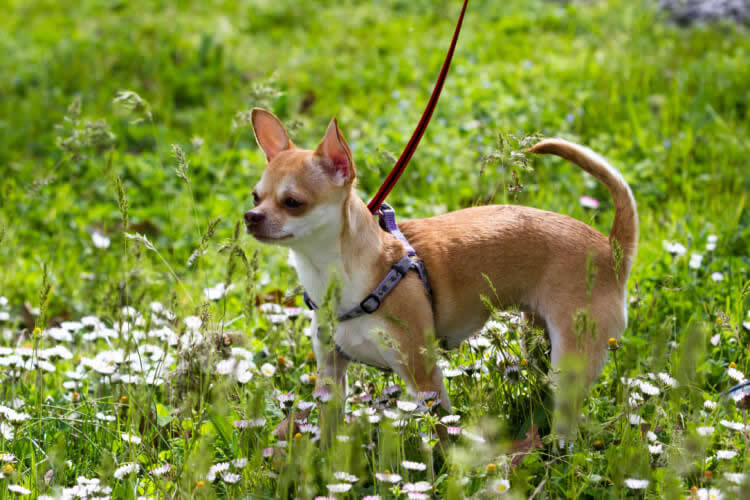
When walking your Chihuahua outdoors, keep him on a leash and harness. It will give you more control over your Chihuahua while simultaneously preventing him from straying too far.
The farther your Chihuahua strays from your side, the greater the risk of him being attacked. Hawks may feel emboldened if they see your Chihuahua alone. With a leash and harness, you can keep your Chihuahua by your side at all times so that hawks won’t view him as an easy target. And if you see a hawk swooping down, you can pull the leash to retrieve and protect your Chihuahua.
#3) Create Coverage

Coverage can protect your Chihuahua from hawks and other birds of prey. Birds of prey hunt primarily by sight. Hawks can spot animals from up to 100 yards away, whereas eagles can spot animals from up to two miles away.
Owls have excellent eyesight as well, but their vision is particularly keen at night. They have more rods and fewer cones in their eyes. Rods affect night vision, and cones affect color. Therefore, owls have super-strong night vision, but they can only see shades of black, white and gray.
Coverage consists of various shelter structures that obstruct birds’ vision. You can construct an awning or pergola, for example, or you can set up a shade sail. By creating coverage in your yard, hawks and other birds of prey won’t be able to see your Chihuahua — assuming your Chihuahua is underneath it.
#4) Teach a Recall Command
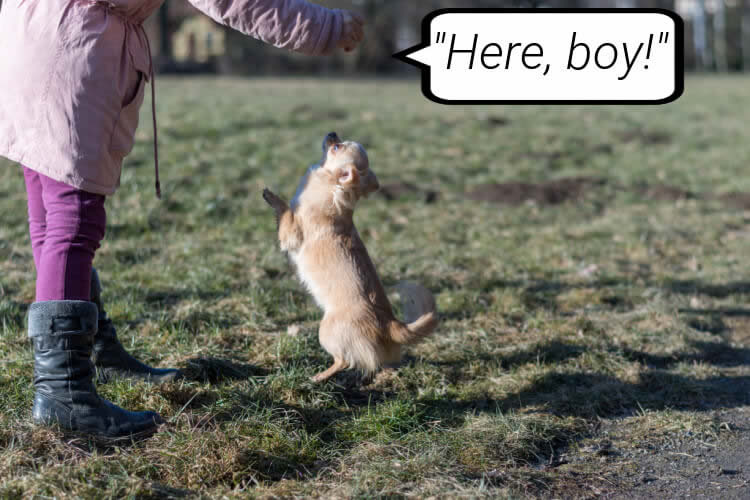
Make sure your Chihuahua knows a recall command. Recall commands are verbal commands that direct dogs to return to their owner. You can use any word or combination of words as a recall command, such as “here,” “come,” “now” or “quick.” As long as your Chihuahua knows what it means, he will come to you when you speak it.
A recall command will allow you to recall your Chihuahua if you notice a bird of prey circling above. Your Chihuahua, of course, should remain by your side if you walk him on a leash and harness. But there’s always the chance that he’ll slip out of his harness, in which case you can use the recall command.
#5) Ditch the Birdfeeders
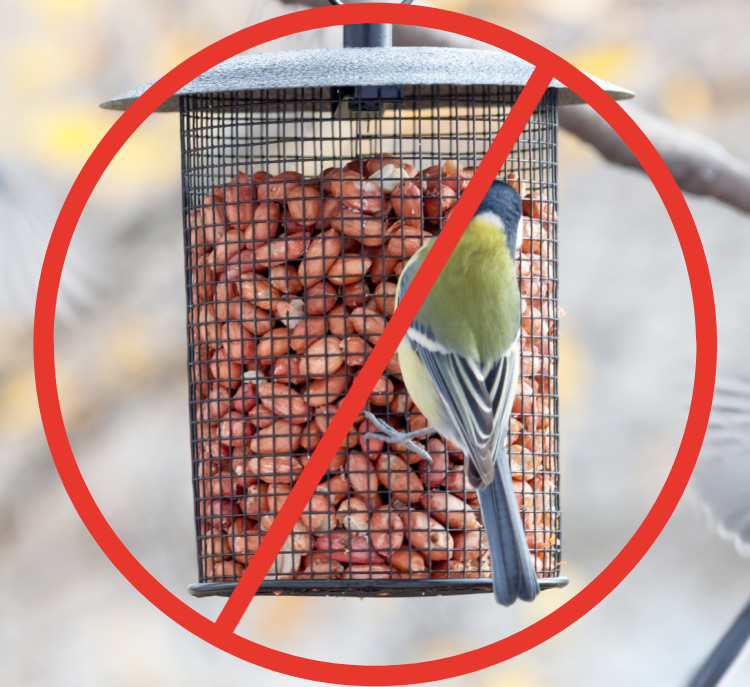
If you have any birdfeeders in your yard, you may want to ditch them. Hawks and other birds of prey typically don’t eat birdfeeder seed or mix, but they do eat the animals that birdfeeders attract.
Birdfeeders attract small birds and squirrels. As more of these animals venture into your yard in search of an easy meal, hawks may follow them. You can discourage birds of prey from circling over your yard by removing all birdfeeders.
#6) Invest in a Bird-Proof Vest
There are bird-proof vests available to protect dogs from birds of prey, some of which include the HawkShield, Raptor Shield, and the Hawk Star Pet Protection Vest. They are wearable vests with built-in protection mechanisms. Some of them feature deterrent spikes. Others feature a reflective design that confuses and disorients birds of prey.
There are also bird-proof vests that are designed to detach. They consist of multiple pieces. If a hawk attempts to lift a Chihuahua wearing one of these vests, the outer piece will detach from the inner piece. The hawk will then fly away with the outer piece, leaving the Chihuahua with the inner piece safely on the ground.
#7) Set Up a Scarecrow

You can set up a scarecrow to keep hawks and other birds of prey out of your yard. Scarecrows, of course, look like people — at least from the perspective of many birds. If a hawk believes your yard is occupied, it may stay in the sky.
Don’t just set up a plain scarecrow consisting of a clothed silhouette of a person. Instead, make it reflective. You can hang some old CDs from the scarecrow, or you can stick a few strips of reflective “Scare Tape” to the scarecrow. Reflective surfaces repel hawks by disorienting them. In addition to making it reflective, you should move the scarecrow at least once a week. The scarecrow will be more effective at deterring hawks if it’s reflective and moves around.
Consider adding an owl decoy to your scarecrow setup. Hawks are afraid of owls. If they see an owl decoy sitting in your yard, they may keep their distance. Furthermore, an owl decoy will ward off snakes and other small animals that predatory birds, including owls and hawks alike, target as meals.
#8) Walk Your Chihuahua in a Group
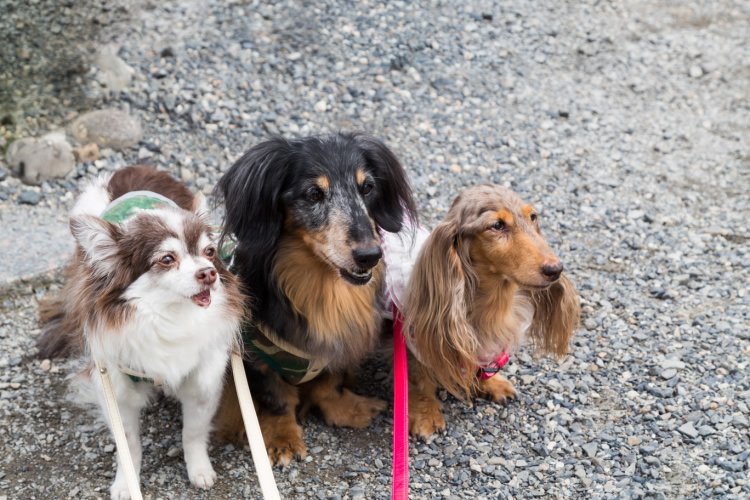
If you own one or more other dogs, consider walking all of them together. Hawks are less likely to attack your Chihuahua if he’s part of a larger group.
As the adage goes, “There’s strength in numbers.” A group of three dogs poses a greater threat to hawks than a single, alone Chihuahua. Dogs are pack animals by nature. If a hawk approaches, they will likely band together to fight it off. Unless a hawk is starving or nesting nearby, it will probably avoid this confrontation.
#9) Eliminate Perches
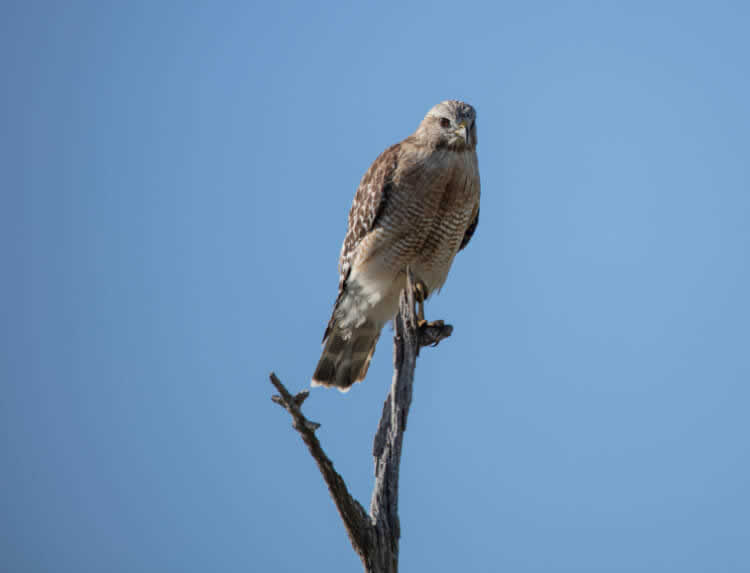
Another way to protect your Chihuahua from hawks and other birds of prey is to eliminate perches. Perches are elevated spots that hawks use as a vantage point. Rather than flying all day, hawks will land on a perch to rest while simultaneously scanning the surrounding landscape.
Tall posts, fences and branches are all potential perches. Eliminating these spots will create a safer environment for your Chihuahua.
Rather than removing perches, you can line them with bird spikes. Bird spikes consist of metal or plastic spikes that are designed to ward off birds. They don’t actually harm birds. Instead, bird spikes deter birds from landing on potential perches.
#10) Install an Ultrasonic Pest Deterrent Device
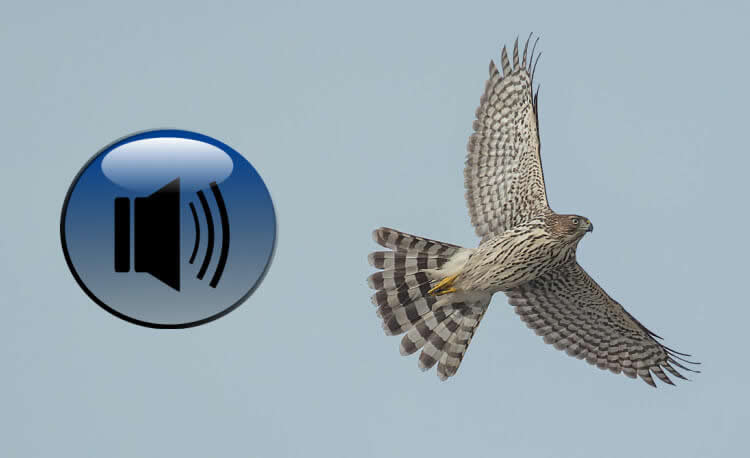
There are ultrasonic pest deterrent devices that can keep birds out of your yard. They work by emitting sound waves with a frequency that’s outside that of human hearing. Many birds can hear these sound waves, which they may find to be annoying.
Ultrasonic pest deterrent devices are most effective at warding off small birds like pigeons, crows and starlings. Nonetheless, hawks prey upon these small birds. By installing an ultrasonic pest deterrent device, you can repel these small birds from your yard.
What to Do If You See a Hawk Near Your Chihuahua
If you happen to see a hawk circling over your Chihuahua, run toward your Chihuahua while making as much as noise as possible. You can yell the recall command, which may result in your Chihuahua stopping what he’s doing and coming to your side. If your Chihuahua doesn’t know a recall command, you can yell just about anything. As long as you are loud — and you are running toward your Chihuahua — the hawk should abandon its attack.
Keep in mind that you shouldn’t attempt to harm hawks. All hawks and other birds of prey in the United States are protected under the Migratory Bird Treaty Act (MBTA). Established in 1918, the MBTA prohibits the killing, injuring, capturing, selling, trading and transport of certain migratory birds without authorization from the U.S. Department of Interior U.S. Fish and Wildlife Service (FWS).
In Conclusion
A fenced-in yard isn’t enough to protect your Chihuahua from predators. It may prevent foxes, coyotes and other common land predators from reaching your Chihuahua, but it won’t offer any protection against birds of prey. Hawks and other birds of prey have been known to attack Chihuahuas. They may not be able to carry a small Chihuahua, but they can still cause serious injury or death.
References:
https://artsandsciences.syracuse.edu/alumni/nest-cam/hawk-watching-tips/
Has your Chihuahua ever been threatened by a hawk or bird of prey? Let us know in the comments section below!